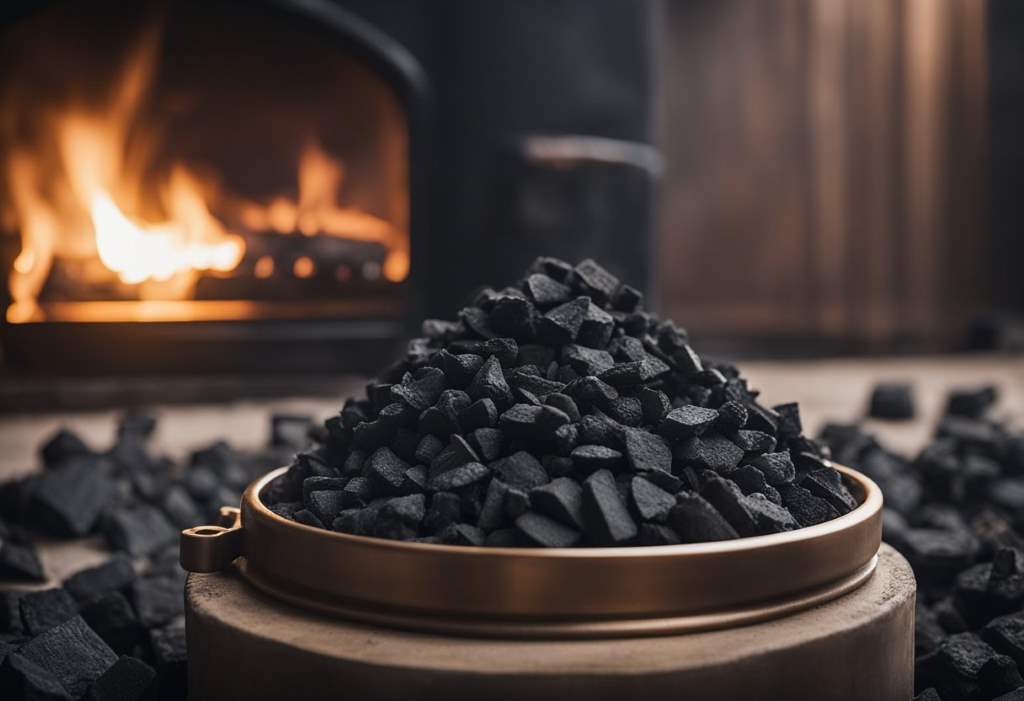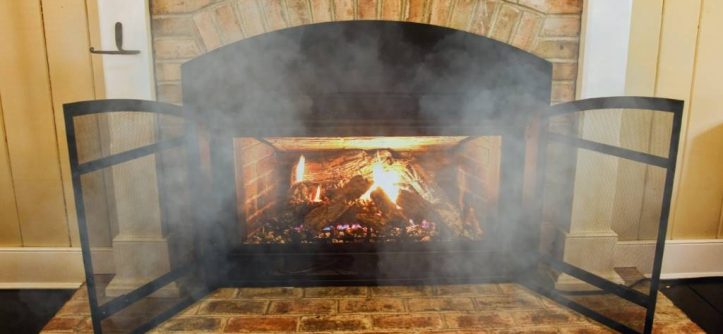Nothing beats the cozy warmth of a wood-burning fireplace on a chilly evening. But that lingering fireplace smell? Not so charming. The smoky odor from a wood-burning stove or fireplace can cling to your home, making it feel less inviting. Whether it’s from creosote buildup, damp firewood, or poor ventilation, the smell can seep into furniture, carpets, and even your HVAC system. According to the Environmental Protection Agency (EPA), indoor air quality can be 2–5 times worse than outdoor air due to pollutants like fireplace smoke. A study from the National Fire Protection Association (NFPA) notes that 14% of home fires involve fireplaces or chimneys, often leaving behind stubborn soot odor. Don’t worry—this guide shows you practical, effective ways to banish that fireplace smoke smell and keep your home fresh.
Why Does Your House Smell Like Fireplace Smoke?
Fireplace smoke smell comes from incomplete combustion, creosote buildup, or poor ventilation. When wood burns, it releases fire gases and chemical compounds that can linger. Damp firewood or a drafty fireplace worsens the issue. The smell sticks to soft surfaces like curtains, carpets, and furniture. It can even circulate through air vents via your HVAC system. Understanding the cause helps you pick the right solution.
Common Causes of Fireplace Smoke Smell
- Creosote Buildup: Tar-like residue in the chimney flue traps odors.
- Damp Firewood: Wet wood burns inefficiently, producing more smoke.
- Poor Ventilation: A drafty fireplace or blocked chimney flue pushes smoke indoors.
- Soot and Ash: Leftover ash layers in the fireplace release lingering odors.
- HVAC Systems: Smoke particles spread through air vents, embedding in HVAC filters.
Immediate Steps to Reduce Fireplace Smoke Smell

Start with quick fixes to tackle the smoke smell right away. These methods use common household items and focus on improving air circulation.
1. Ventilate Your Home
Open windows and doors to let fresh air flow. Use fans or air movers to push smoky air out. Good air circulation dilutes odors and clears fire gases.
2. Clean the Fireplace
Remove ash and soot with a HEPA vacuum. Wipe surfaces with a damp cloth or microfiber duster. Clean the fireplace insert to prevent odor buildup.
3. Use Household Cleaners
Sprinkle baking soda or white vinegar on affected areas like carpets or furniture. Let it sit for 15–30 minutes, then vacuum. These home remedies absorb and neutralize odors.
4. Run an Air Purifier
Place an air purifier with HEPA filters or an activated carbon filter near the fireplace. These devices trap smoke particles and improve indoor air quality.
Long-Term Solutions for Fireplace Smoke Odor
For persistent odors, you need more robust solutions. These methods target the root causes and prevent future smells.
1. Deep Clean Your Home
Smoke particles cling to fabrics and surfaces. Use a steam carpet cleaner or professional steam cleaning for carpets and upholstery. Clean window treatments and drapery with a drapery cleaning system. For tough spots, use a microfiber cloth with a household cleaner like trisodium phosphate.
2. Use Odor Neutralizers
Place bowls of activated charcoal, charcoal briquettes, or store-bought odor absorbers in the room. These materials soak up smoke odors over time. For a natural touch, try dried orange peel, lavender essential oil, or cinnamon oil to mask smells.
3. Maintain Your Fireplace
Hire a professional from a restoration company or an HVAC technician to inspect your chimney flue and fireplace insert. Regular maintenance prevents creosote buildup and ensures proper combustion air flow. Follow ecodesign 2022 standards for cleaner-burning fireplaces.
4. Upgrade Your HVAC System
Replace HVAC filters with HEPA filtration systems or activated carbon filters. These trap smoke particles before they spread through air vents. Schedule regular maintenance with an HVAC technician to keep your system clean.
5. Consider Ozone Treatment
Ozone disinfectors or ulv sprayers can neutralize tough odors like cigarette smoke or fire smoke. Use these with caution, as ozone can be harmful in high concentrations. Hire a professional for safe ozone treatment.
Preventing Fireplace Smoke Smell
Stop the smoke smell before it starts. These preventive measures keep your home fresh and odor-free.
- Burn Dry Wood: Use seasoned, dry firewood to reduce smoke. Avoid damp firewood, which creates more fire gases.
- Clean Regularly: Vacuum ash and soot after each fire. Wipe down the fireplace insert with a damp cloth.
- Improve Ventilation: Install a cold air return or air cleaner to boost air circulation. Check for blockages in the chimney flue.
- Use Air Purifiers: Run an air purifier with HEPA filters or activated carbon filters during and after fireplace use.
- Seal Gaps: Add vapor barriers or weatherstripping to a drafty fireplace to prevent smoke leaks.
When to Call a Professional
Some smoke odors need expert help. If the smell persists after trying home remedies, or if you suspect fire damage, cable fire residue, or a gas leak, act fast. A restoration company can assess and treat severe odors. Professional cleaning services like Magic Mountain Chimney or COIT Pro’s specialize in removing soot odor and fire smoke. An HVAC technician can clean air vents and replace HVAC filters to stop odor circulation.
Creative Home Remedies for a Fresh-Smelling Home
Want to add a fun twist to odor removal? Try these unique home remedies inspired by online communities like the Stack Exchange Network and Stack Overflow Q&A communities.
- Vanilla Extract: Soak a cotton ball in vanilla extract and place it near the fireplace. It masks smoky smells with a warm scent.
- Dried Orange Peel: Scatter dried orange peels in decorative bowls. They release a citrusy aroma that fights fireplace odors.
- Lavender Essential Oil: Add a few drops to a microfiber cloth and wipe down surfaces. It leaves a calming, fresh scent.
- Cinnamon Oil: Mix with water in a spray bottle for a cozy, odor-fighting mist.
In 2023, a homeowner in Colorado struggled with a persistent fireplace smell after a small house fire. They tried baking soda and air purifiers but saw little improvement. A restoration company found creosote buildup and a blocked chimney flue. After professional steam cleaning, an ozone treatment, and HVAC filter replacement, the odor vanished. Regular maintenance and dry firewood kept their home smoke-free afterward.
Conclusion
Getting rid of fireplace smoke smell in your house is achievable with the right steps. Start with ventilation, baking soda, and air purifiers for quick relief. Deep clean fabrics, use activated charcoal, and maintain your fireplace for lasting results. Prevent future odors by burning dry wood and upgrading your HVAC system. If the smell lingers, call a professional for help. Try these tips today to enjoy a fresh, cozy home.
FAQs
How Do I Know If Creosote Buildup Is Causing the Smoke Smell?
Check for a tar-like residue in the chimney flue. A strong, smoky odor after fires is a clue. Hire a professional to inspect and clean it.
Can Air Purifiers Remove Fireplace Smoke Smell?
Yes, air purifiers with HEPA filters or activated carbon filters trap smoke particles. Place them near the fireplace for best results.
Are Home Remedies Like Baking Soda Effective?
Baking soda and white vinegar absorb and neutralize odors. Sprinkle them on carpets or furniture, let sit, then vacuum.
When Should I Call a Professional for Smoke Odor?
Call a restoration company if the smell persists, or if you suspect fire damage, a gas leak, or HVAC issues.
How Can I Prevent Fireplace Smoke Smell?
Burn dry wood, clean the fireplace regularly, use air purifiers, and maintain your chimney flue and HVAC system.




